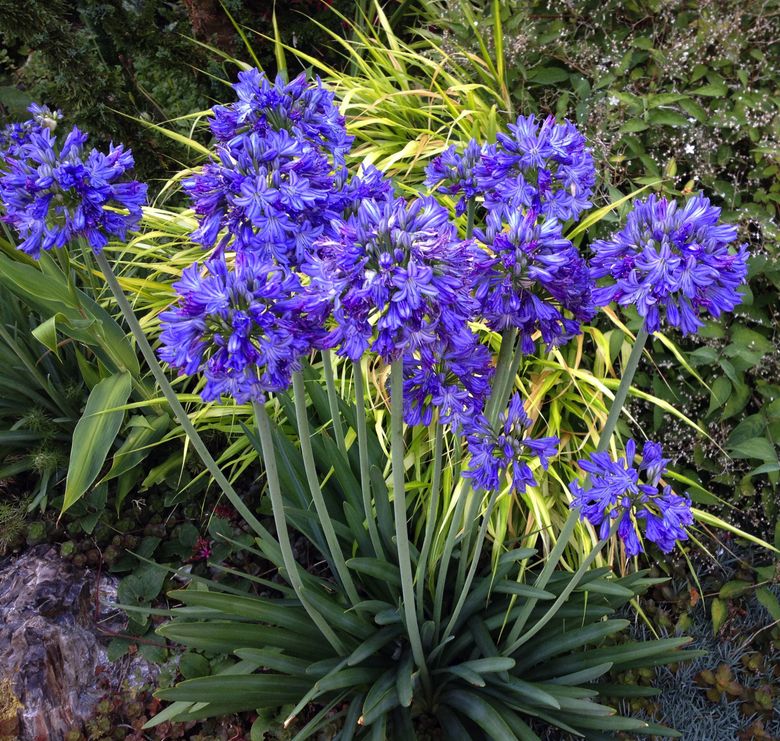Mastering the Art of Agapanthus Care: Crucial Actions for Healthy Development and Lively Blooms
In the world of gardening, the growing of agapanthus stands as a satisfying endeavor for those that look for to nurture these elegant flowering plants. With their striking flowers and graceful foliage, agapanthus has captured the interest of garden enthusiasts worldwide. Nevertheless, attaining optimum development and lively blooms needs a nuanced approach that encompasses different crucial steps. From picking the appropriate range to mastering trimming techniques, the trip towards growing prospering agapanthus plants is complex and holds the crucial to opening the full capacity of these herb treasures.

Choosing the Right Agapanthus Variety

When selecting the appropriate Agapanthus selection for your yard, think about factors such as environment viability, blossom color, and growth behavior. Agapanthus, frequently understood as Lily of the Nile or African lily, can be found in a variety of shades ranging from shades of blue and purple to white. Pick a flower color that complements your existing yard combination to produce an unified landscape. Additionally, consider the climate in your region to ensure the Agapanthus range you choose can thrive in your specific problems. Some selections are a lot more forgiving of chilly temperature levels, while others choose warmer climates. Understanding the development routine of different Agapanthus varieties is essential for proper placement within your yard. Some selections have a clumping growth routine, perfect for containers or boundaries, while others have a more spreading nature, appropriate for ground cover or mass plantings. By carefully reviewing these aspects, you can select the perfect Agapanthus range to boost the charm of your yard.
Perfect Planting Problems
Thinking about the optimum environmental demands is essential for effective Agapanthus growing. Agapanthus plants are sensitive to cold temperatures and ought to be safeguarded from frost throughout winter months.
To ensure healthy development and lively flowers, plant Agapanthus light bulbs at a deepness of regarding 2-4 inches and space them 8-12 inches apart. Adding raw material, such as garden compost, to the soil can improve drainage and fertility, promoting durable root advancement. Mulching around the base of the plants assists retain moisture and suppresses weed growth. Routine watering is crucial, particularly throughout the growing season, to keep the dirt regularly wet yet not soaked.
Watering and Feeding Tips
Keeping correct wetness levels and giving vital nutrients are essential elements in the care program for Agapanthus plants. When it comes to watering Agapanthus, it is essential to strike a balance. These plants like regularly wet dirt but are prone to root rot if overwatered.
Fertilizing Agapanthus is vital for promoting healthy development and prolific flowers. Use a well balanced fertilizer, such as a 10-10-10 formula, in the very early springtime as new development arises. Repeat this application every 6-8 weeks throughout the expanding season. Prevent excessive fertilizing, as it can cause lush vegetation at the expense of blossoms. Always follow the supplier's directions for correct dilution and application methods. By following these watering and fertilizing tips, you can guarantee your Agapanthus plants thrive and generate dynamic, resilient flowers.
Trimming Techniques for Agapanthus
Pruning Agapanthus plants at the suitable times and with appropriate techniques is vital for maintaining their health and wellness and promoting ideal development and blooming. The optimal Visit Your URL time to prune Agapanthus is in late winter season or early spring before new growth arises.
Deadheading invested flowers can also reroute the plant's energy right into generating more flowers instead than setting seeds. If you desire to gather seeds for proliferation, leave some blossoms to completely dry and fully grown on the plant.
Bear in mind to use clean, sharp devices to make precise cuts and lower the risk of introducing illness. Agapanthus. Regular trimming will help maintain your Agapanthus looking cool and healthy while guaranteeing a plentiful screen of beautiful blooms
Managing Typical Parasites and Illness
After guaranteeing proper pruning straight from the source strategies for Agapanthus, it is important to resolve typical bugs and illness that can affect the wellness and vigor of these plants. One common parasite that impacts Agapanthus is the Agapanthus gall midge.
Furthermore, Agapanthus plants can experience from root rot if they are grown in improperly draining pipes dirt. By being watchful and taking timely activity against illness and parasites, you can aid your Agapanthus plants grow and produce lively flowers. Agapanthus.

Verdict
To conclude, grasping the art of agapanthus care involves picking the right selection, supplying optimal growing problems, correct watering and feeding, suitable trimming methods, and addressing common pests and illness. By adhering to these vital actions, you can ensure healthy growth and vibrant flowers for your agapanthus plants. Bear in mind to consistently keep an eye on and keep your plants to advertise their overall health and durability.
To ensure healthy and balanced development and dynamic blossoms, plant Agapanthus bulbs at a deepness of concerning 2-4 inches and room them 8-12 inches apart. By following these watering and fertilizing ideas, you can guarantee your Agapanthus plants grow and create lively, long-lasting flowers.
One common parasite that Discover More affects Agapanthus is the Agapanthus gall midge. In addition, Agapanthus plants can endure from root rot if they are grown in improperly draining pipes soil. By adhering to these necessary steps, you can guarantee healthy growth and lively blooms for your agapanthus plants.